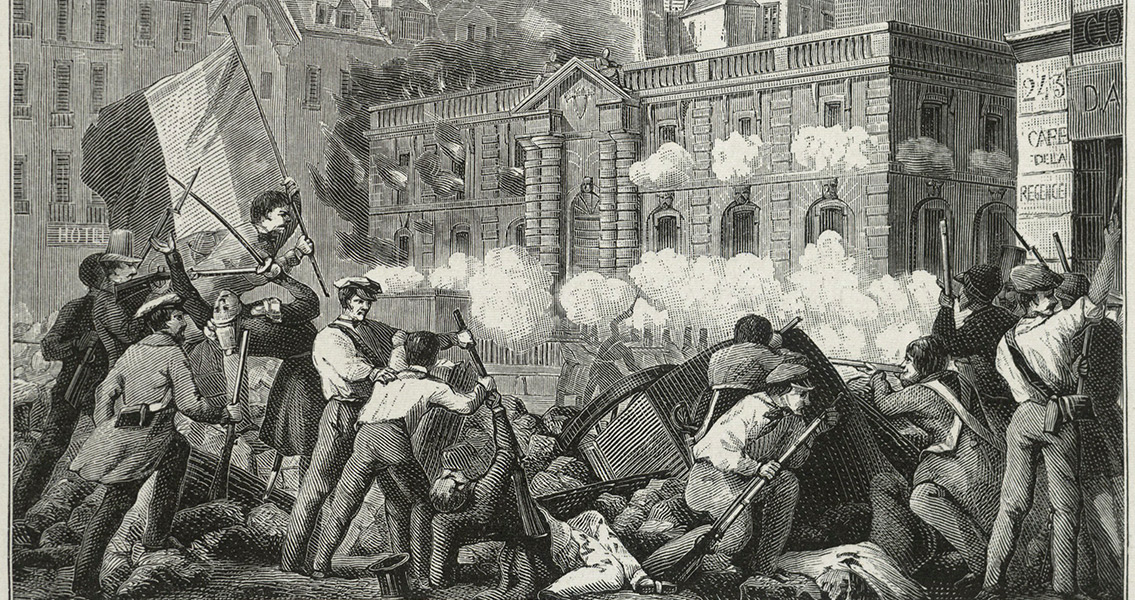<![CDATA[Lasting from 22nd June to 26th June, 1848, the June Days uprising in Paris was a unique confrontation in a year characterised by revolution across Europe. Historians typically categorise 1848 as a year of revolution, as the class system around Europe was pulled into question like never before. Continuing a process which had started with the French Revolution in 1789, the middle and working classes of Europe waged a bloody, dramatic war against Europe's traditional ruling classes. It is in this context that the events of the June Days need to be considered. The 'Year of Revolution' started with a revolt in Sicily on 12th January. The city of Palermo descended into a warzone as armed radicals, peasants and workers took to the streets to fight for reform, and freedom from the Bourbon monarchy. The uprising briefly achieved its aim, with Bourbon troops leaving the island and the people winning the right to elections. Internal disputes fueled by ideological disagreements between middle class radicals and peasant and worker revolutionaries ultimately divided and undermined the new regime however, and in September 1848 Bourbon troops retook Palermo with little resistance. In France, the government of Louis Philippe which had taken power following the 1830 Revolution was still largely dominated by the bourgeoisie. Discontent boiled over into revolution in February 1848, as working class mobs erected barriers in the street and Louis was forced to abdicate. The revolution succeeded in securing universal male suffrage, and a number of socialist leaning reforms to French politics and society. This pattern, which had started in Sicily and France, was replicated elsewhere in Europe over the next few months, although the outcomes and motivations obviously varied from place to place. This sudden outburst of revolutions in a short space of time had a variety of causes. Alongside locally specific triggers, such as the French dissatisfaction with Louis Philippe, were international factors which affected the whole of Europe. A period of adverse weather across the continent in 1845-46 led to a long term drop in agricultural production. Food prices rose across Europe leading to depression and mass unemployment. This in turn led to increasing political radicalisation, and a heightened sense of class divide. The June Days uprising came in response to the new French government's move to reverse some of the more radical reforms it had implemented. The State owned National Workshops which had been created to provide work were overwhelmed by people looking for employment, placing a strain on the French economy. In May, a group of protesters seeking to overthrow the National Assembly in exchange for a more radical government were met with heavy suppression from the National Guard. On 22nd June, three days of warfare broke out in Paris as barricades were erected throughout the city and workers demanded reform to the political system. The National Guard were once again given permission to crush the rebellion, and a brutal crackdown took place with 1,500 rebels killed and 12,000 arrested. Tellingly, the rebels in Paris received little support from outside the city, while much of the middle class also refused to back the rebellion, revealing the desire for order to be restored outweighing that for change. The fate of the June Days uprising revealed that reactionary politics had reestablished itself in France. A new constitution granting universal male suffrage was created, but more radical change had been successfully blocked or reversed. In the broader context of the Year of Revolution, the June Days seemed to represent an end to the revolutionary fervour. Groups that had previously allied to campaign for change became divided, while politicians who promised stability once again enjoyed the greatest popularity.]]>
June Days Uprising in Paris
